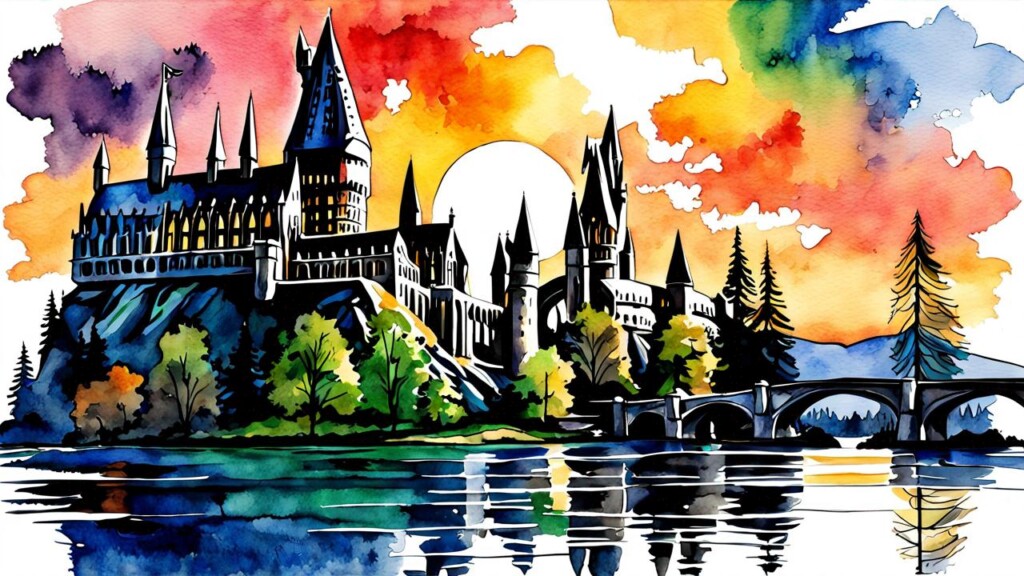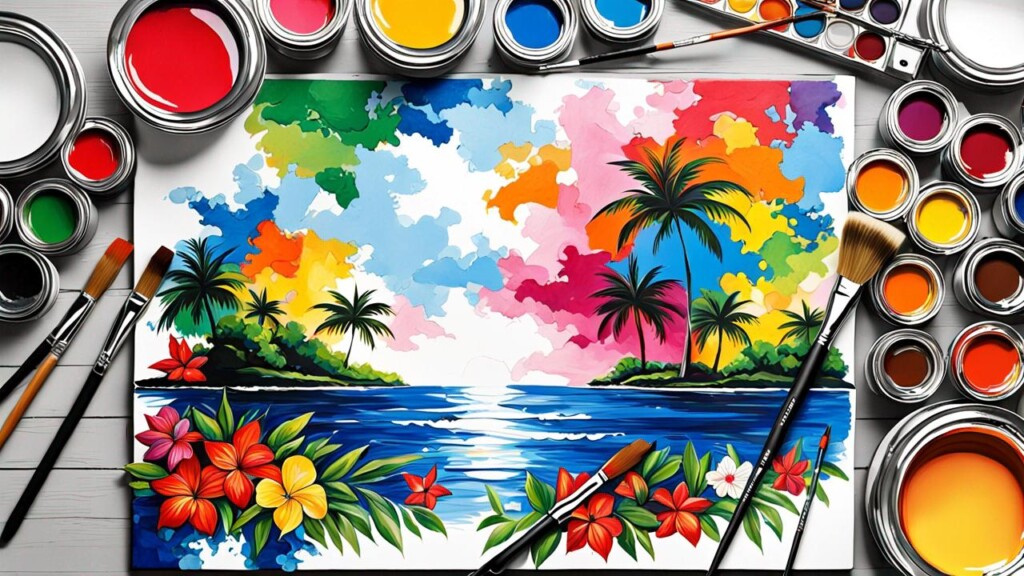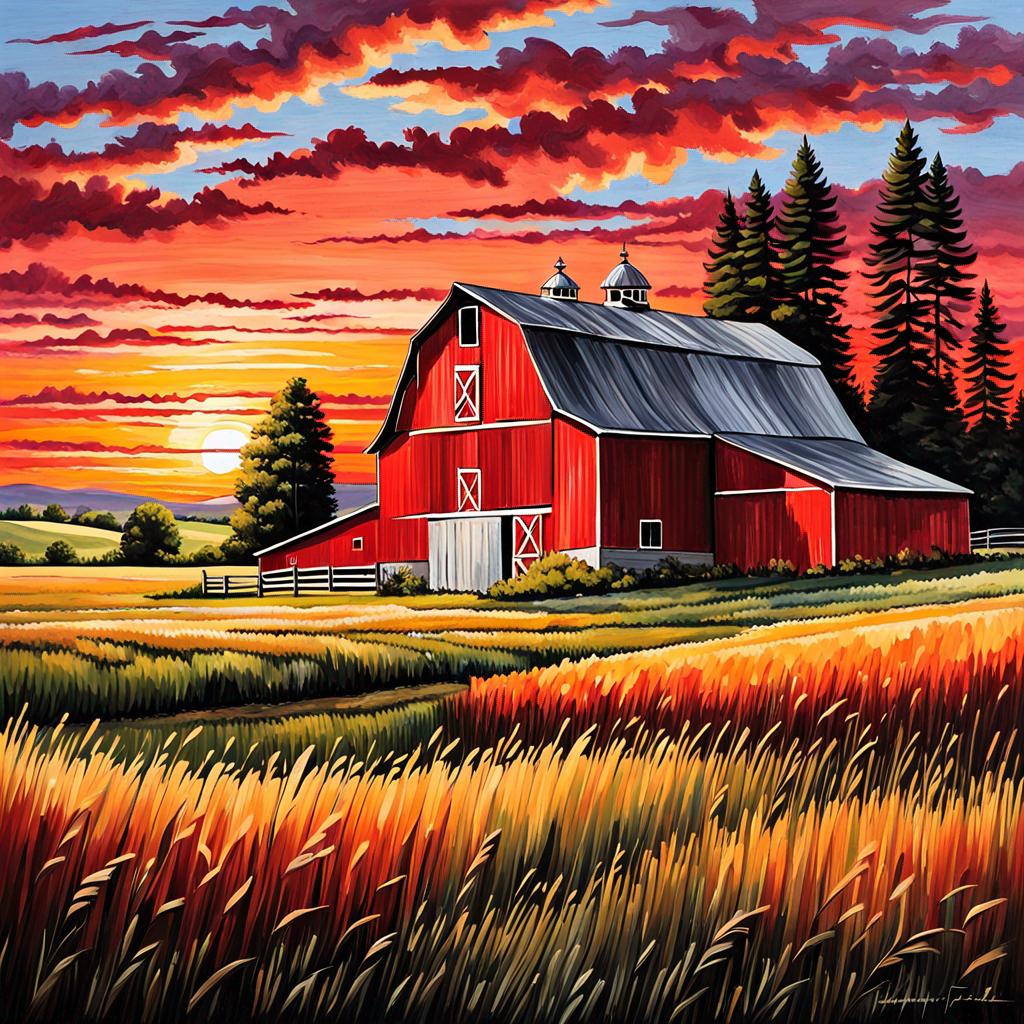Crafting effective prompts is the secret to generating stunning AI art. Prompt Engineering, or simply guiding the AI with English instructions, is like having a conversation with the AI. It’s about structuring your text descriptions to guide the AI towards achieving your desired creative results with the perfect AI Art prompts.
In this beginner’s guide, we’ll break down the language of AI, and explore simple steps to make your first AI art using text-to-image models like DallE or SDXL:
Start with Simple Prompt Frameworks
For starters, using specific frameworks or structures can help guide the AI better. Think of it as giving step-by-step instructions. A basic structure to create good AI prompts could be “Generate a painting of a [subject] with [composition] in [style].”
Here, [subject] refers to the main focus of your artwork, like a sunset, a city skyline, or a portrait. [Composition] specifies how things are placed or interact, and [style] suggests the art style such as impressionist or abstract.
For example: “Generate a painting of a ‘Hogwarts Castle’ in ‘watercolor style'”.

Strike the Right Balance
When writing prompts for AI image generators, finding the right balance between detail and ambiguity is crucial. Too vague, the text-to-image model may not produce a clear image. Too specific, the AI’s creativity might get restricted. You want to guide the AI photo generator, but also allow it the freedom to surprise you.
Consider these two examples:
- Too vague: “Create a painting.”
- Too specific: “Create a painting of a red barn with a black roof in an open field at sunset with a blue truck parked by the barn door, three oak trees on the right, children playing in the fields, and wildflowers scattered in the foreground.”

The first lacks enough detail for the AI image generator to understand your vision, while the latter is perhaps too constraining and could limit the model’s creative potential and can end up in hallucinations, although high detailing can bring out the precise elements you want in the output. A balanced prompt might be, “Create a painting of a red barn in an open field at sunset.“

Refine and Iterate
Don’t expect the perfect result from your first prompt. See each attempt as a learning opportunity. Modify and add details progressively based on each output, and you’ll get a better understanding of how the AI picture generator interprets and responds.
Say, your first prompt was “Create a painting of a serene forest.” If the resulting image lacks the expected tranquility, the AI may need more explicit direction. You could change the prompt to “Create a painting of a serene forest with soft sunlight filtering through the leaves” to guide the AI toward your specific vision.
Focus on Essential Ingredients
As a beginner, focus on the basics: subject, composition, style, and additional details. For example: “A vibrant painting of a bustling cityscape at dusk, with buildings lit up in impressionist style“.
Highlighting these elements gives a clear direction to the Image generator, guiding it to generate AI images that align with your specified vision.
For instance, if you’re imagining a sunset scene over mountains with a cool color palette, rather than simply saying, “Create a painting of mountains at sunset” a cue with essential details could be, “Create a painting of mountains at sunset, with hues of purple and blue dominating the landscape.”
Play with Sentence Structures
The way you structure your sentences affects the generative AI’s interpretation. Experiment with full sentences, fragments, lists, and bullet points, and observe how each influences the final art. For instance, bullet points can be useful when you want the AI to focus on multiple important elements.
Different sentence structures can yield diverse results. Consider these alternatives for the same basic prompt:
- Full Sentence: “Create a vibrant painting of a bustling cityscape at dusk.”
- Fragment: “Vibrant cityscape. Bustling. Dusk.”
- List: “Cityscape, vibrant, bustling, dusk.”
- Bullet Points:
- Vibrant
- Cityscape
- Bustling
- Dusk
Each version offers the same essential information, but the AI image generator may interpret and prioritize these prompts differently. Playing around with these structures can help you understand how each format influences the final artwork.
Successful Prompt Examples
To help you get started with Prompt Engineering, let’s look at some examples shared by Magic Prompt tool on Qolaba AI Studio which helps beginners get started without any prompt engineering knowledge:
- Prompt: “An abstract painting of a serene morning in the forest with rays of sunlight filtering through the foliage.”
The AI should generate an abstract representation capturing the tranquil ambiance of a forest in the morning, with sunlight streaming through leaves. - Prompt: “A surrealist interpretation of a knight fighting a dragon in a dreamlike landscape.”
We have a precise style (surrealism) and a clear subject (a knight fighting a dragon), guiding the image generator to produce a surrealistic digital artwork of the scene.
Conclusion
Prompt engineering can seem complex, but it’s really about having a conversation with AI. With practice, you’ll learn prompt engineering and find the sweet spot between guidance and freedom, bringing your artistic visions to life in new and surprising ways. Remember, every attempt is a part of the journey and an opportunity to learn.
Experiment with sentence structures, play with styles and don’t be afraid to iterate. As you refine your prompts, you’ll uncover the vast potential of AI artistry, paving the way for a new form of collaborative creativity. So, why wait? Kickstart your artistic journey with AI today and go create some magic!





